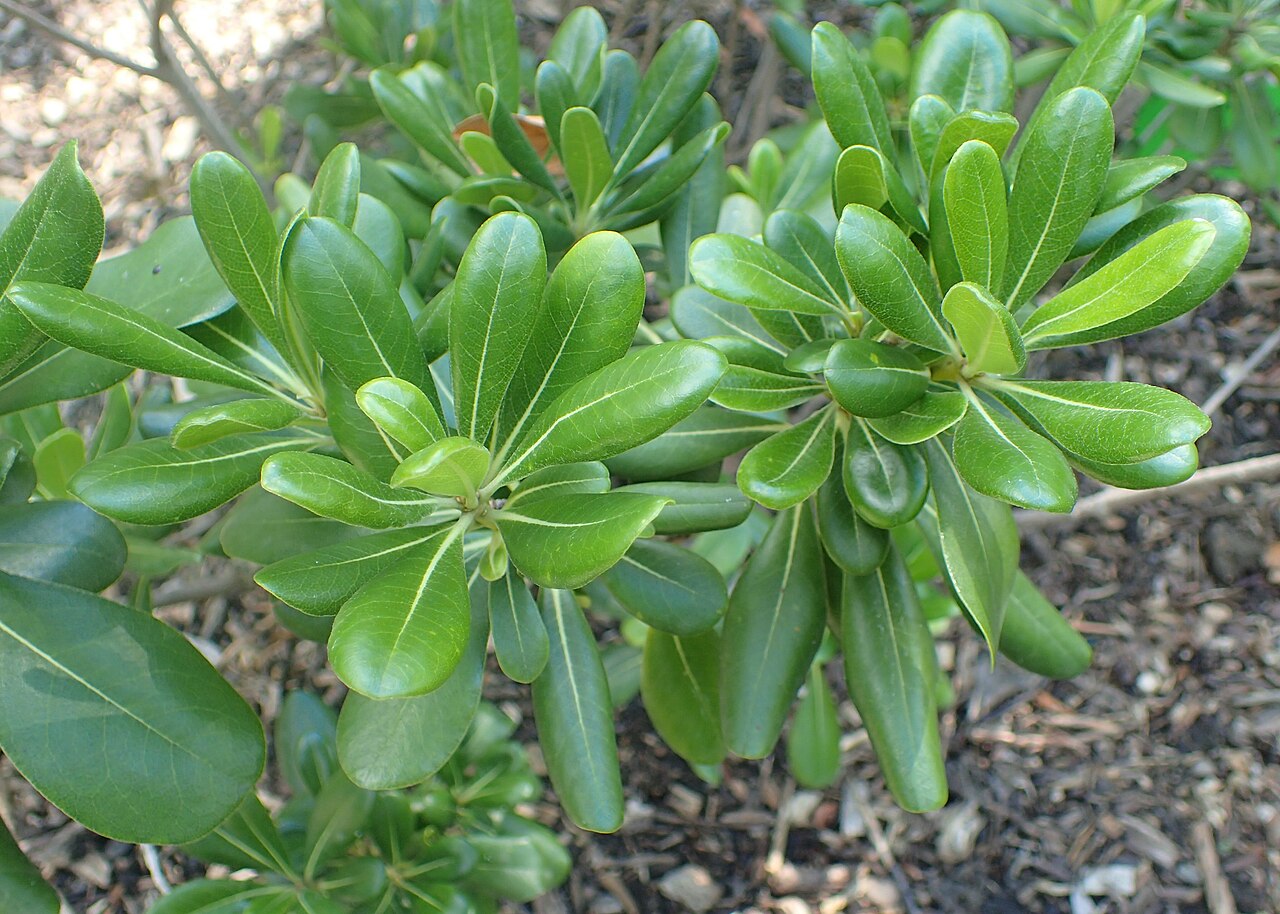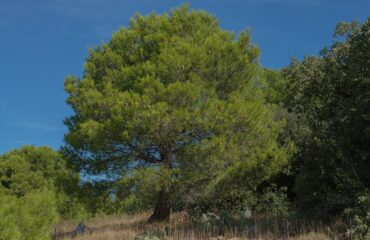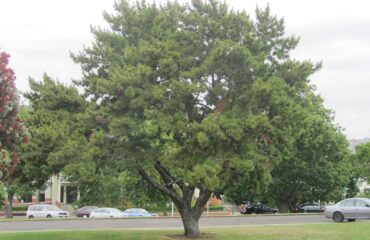Pittosporum tobira ‘Nanum’, commonly known as Dwarf Mock Orange or Dwarf Japanese Pittosporum, is a compact, evergreen shrub highly valued for its dense, rounded form and glossy, dark green leaves. Native to Japan, Korea, and China, this dwarf variety of Pittosporum tobira is ideal for hedges, borders, and container gardening. Propagating Pittosporum tobira ‘Nanum’ can be effectively achieved through seed propagation, cutting propagation, and layering. Each method offers different advantages and is suitable for various propagation goals.
Pittosporum tobira ‘Nanum’ (Dwarf Mock Orange) Propagation Methods
1. Seed Propagation
1.1. Seed Collection
Propagating Pittosporum tobira ‘Nanum’ from seeds is less common due to the variability in seedlings, but it can be done to produce a large number of plants.
- Identifying Mature Fruits: Seeds are found within the small, orange-brown capsules that the plant produces after flowering. These capsules mature in late summer to autumn.
- Harvesting Seeds: Collect the capsules when they start to split open naturally, revealing the seeds inside. Gather the seeds directly from the capsules for the best results.
1.2. Seed Preparation
Proper seed preparation enhances the chances of successful germination.
- Cleaning Seeds: Extract the seeds from the capsules and clean them to remove any pulp or residue. This helps prevent fungal growth.
- Stratification (Optional): Cold stratification can improve germination rates for Pittosporum seeds. Store the seeds in a moist medium (such as sand or vermiculite) in the refrigerator at 2-4°C (36-39°F) for 2-3 months.
1.3. Sowing and Germination
Once prepared, the seeds can be sown.
- Sowing Seeds: Sow the seeds on the surface of a well-draining potting mix, pressing them lightly into the soil. Covering them with a thin layer of sand or fine soil is optional but can help maintain moisture.
- Germination Environment: Place the seed trays in a warm, bright location with indirect sunlight. Maintain a temperature of 20-25°C (68-77°F) and keep the soil surface moist.
- Care for Seedlings: Germination typically occurs within 4-6 weeks. Once the seedlings appear, continue to provide bright, indirect light and maintain consistent moisture. Transplant seedlings into individual pots when they have developed several true leaves and are sturdy enough to handle.
2. Cutting Propagation
2.1. Selecting and Preparing Cuttings
Propagation through cuttings is the most reliable method for maintaining the characteristics of Dwarf Mock Orange.
- Choosing Cuttings: Select healthy, semi-hardwood stems from the current year’s growth. Late summer to early autumn is the optimal time to take cuttings.
- Preparing Cuttings: Cut 10-15 cm (4-6 inches) long sections from the stems, just below a node. Remove the lower leaves to expose the stem for rooting.
2.2. Rooting Hormones and Planting
Using rooting hormones can improve the success rate of cuttings.
- Applying Rooting Hormone: Dip the base of each cutting into a rooting hormone powder or solution. This encourages faster and more reliable root development.
- Planting Cuttings: Insert the treated cuttings into a well-draining rooting medium, such as a mix of peat and perlite or a specialized cutting compost. Ensure the medium is moist and sterile to prevent rot and fungal issues.
2.3. Rooting Environment and Care
Creating the right environment is essential for rooting cuttings successfully.
- Maintaining Humidity: Use a humidity dome or plastic cover to keep the environment around the cuttings moist. This reduces water loss and promotes root growth.
- Optimal Conditions: Place the cuttings in a bright area with indirect light. Maintain a temperature of 18-22°C (65-72°F) and keep the medium consistently moist but not waterlogged.
- Monitoring Root Development: Roots should begin to form within 4-8 weeks. Gently tug on the cuttings to check for resistance, indicating successful rooting. Once rooted, gradually introduce the new plants to lower humidity and normal light conditions before transplanting them into individual pots.
3. Layering
3.1. Purpose of Layering
Layering is a practical method for propagating Dwarf Mock Orange that allows for the production of new plants from the parent plant without separating them until they have established roots.
- Benefits: Layering provides a high success rate with minimal disturbance to the plant. It’s particularly useful for difficult-to-root species or when propagating larger, established shrubs.
3.2. Layering Techniques
Several layering techniques can be applied to Pittosporum tobira ‘Nanum’, with air layering and ground layering being the most effective.
- Ground Layering: Select a low-growing branch and bend it down to the ground. Remove a small section of bark where the branch touches the soil to expose the cambium layer. Bury this section in a shallow trench and secure it with a peg or stone. Cover with soil, leaving the tip of the branch exposed.
- Air Layering: Choose a healthy, flexible branch and make a small cut or remove a ring of bark to expose the cambium layer. Apply rooting hormone to the exposed area and wrap it with moist sphagnum moss. Cover the moss with plastic wrap to maintain moisture and secure it with ties or tape.
3.3. Post-Layering Care
Proper care ensures successful rooting and separation of the new plant.
- Maintaining Moisture: Keep the buried or wrapped area moist throughout the rooting period. For air layering, ensure the moss remains damp but not waterlogged.
- Monitoring Root Development: Check for root growth after a few months. Ground layers may root in 3-6 months, while air layers might take longer, depending on conditions.
- Separating and Transplanting: Once a substantial root system has developed, carefully cut the new plant from the parent and transplant it into a pot or its new garden location. Provide adequate water and care as the new plant establishes itself.
Conclusion
Propagating Pittosporum tobira ‘Nanum’ can be effectively accomplished through seeds, cuttings, or layering. Seed propagation, while less common for cultivars due to genetic variability, allows for large-scale production. Cutting propagation is the preferred method for maintaining specific characteristics, providing reliable and uniform results. Layering offers a low-stress propagation technique for producing new plants directly from the parent without immediate separation. By mastering these methods, gardeners can successfully grow and expand their collection of this versatile and attractive shrub, enhancing their landscapes with the compact beauty of Dwarf Mock Orange.
Share this article



